Yoga Poses for Menopause Relief: A Comprehensive Guide
Table of Contents
Introduction
Menopause is a natural phase in a woman’s life that marks the end of her reproductive years. This stage brings with it a myriad of physical and emotional changes that can be challenging to navigate. One effective way to find relief from menopause symptoms is through the practice of yoga. In this comprehensive guide, we will explore the benefits of yoga during menopause and share some of the most effective poses for relief.

Benefits of Yoga During Menopause
Yoga is an ancient practice known for its physical, mental, and emotional benefits. During menopause, yoga can help:
- Alleviate hot flashes: By practicing deep breathing and relaxation techniques, yoga can help reduce the frequency and intensity of hot flashes.
- Improve sleep: Yoga’s calming effects can help improve sleep quality and reduce insomnia.
- Manage mood swings: The mindfulness aspect of yoga can help you become more aware of your emotional state and manage mood swings more effectively.
- Strengthen bones: Weight-bearing yoga poses can help improve bone density and reduce the risk of osteoporosis.
- Boost overall well-being: Regular yoga practice can help improve overall health and well-being, making it easier to navigate the challenges of menopause.
Best Yoga Poses for Menopause Relief
The following yoga poses can be particularly helpful for menopausal women looking for relief from various symptoms.
- Child’s Pose (Balasana) Benefits: Releases tension in the lower back and hips, calms the mind.
How to: Sit on your heels with your knees hip-width apart. Lower your torso between your thighs, extending your arms forward, and resting your forehead on the ground.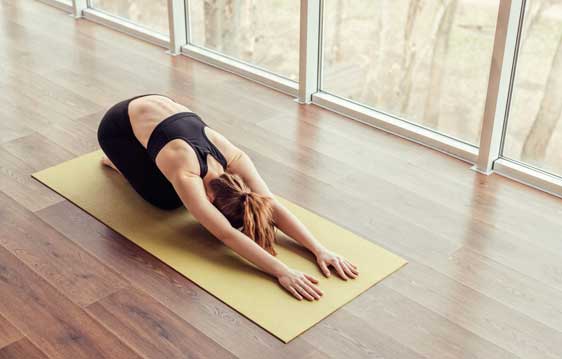
- Bridge Pose (Setu Bandha Sarvangasana) Benefits: Strengthens the back and leg muscles, improves digestion, and reduces anxiety.
How to: Lie on your back with your knees bent and feet flat on the floor. Press your feet into the ground and lift your hips towards the ceiling. Clasp your hands under your lower back and press your arms into the ground for additional support.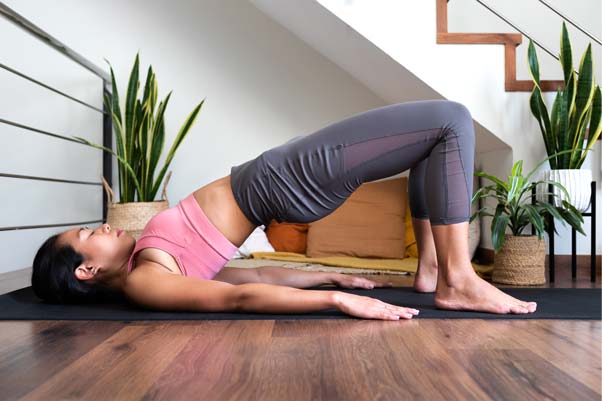
- Seated Forward Bend (Paschimottanasana) Benefits: Stretches the spine and hamstrings, calms the mind, and relieves stress.
How to: Sit with your legs extended in front of you. Inhale and lengthen your spine, then exhale and fold forward, reaching for your feet or ankles.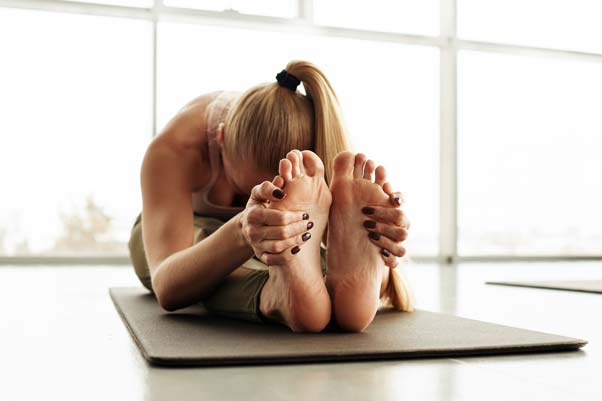
- Legs-Up-the-Wall Pose (Viparita Karani) Benefits: Reduces swelling in the legs, relieves backache, and calms the nervous system.
How to: Place a folded blanket or bolster near a wall. Sit sideways against the wall and lie down, extending your legs up the wall. Adjust the blanket or bolster under your hips for support.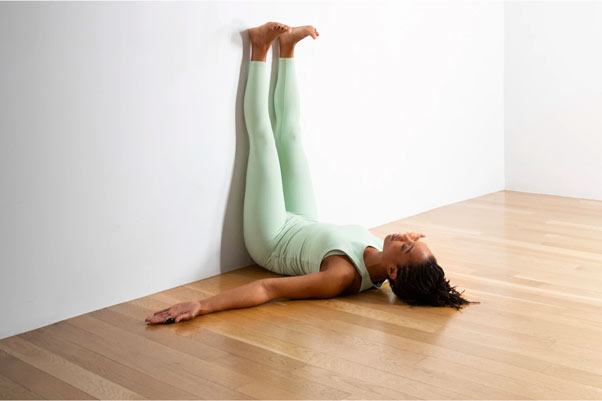
- Reclined Bound Angle Pose (Supta Baddha Konasana) Benefits: Opens the hips and chest, improves circulation, and promotes relaxation.
How to: Lie on your back with your knees bent and the soles of your feet together. Allow your knees to fall open to the sides, creating a diamond shape with your legs. Rest your arms by your sides, palms facing up.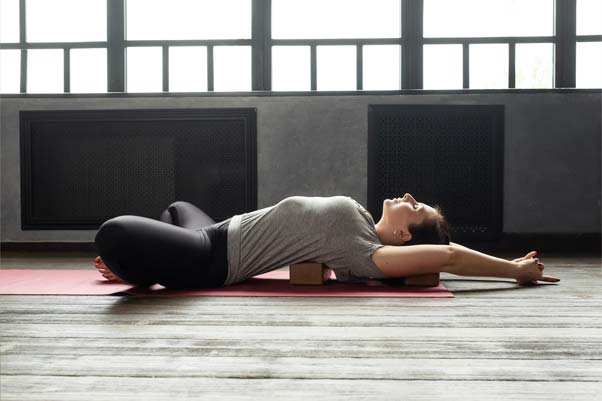
Tips for a Successful Yoga Practice During Menopause
- Listen to your body: Respect your body’s limits and modify poses as needed. Use props, such as blocks or bolsters, to provide support.
- Choose the right style: Experiment with different yoga styles to find the one that best suits your needs. Gentle styles, such as restorative or yin yoga, may be particularly beneficial during menopause.
- Focus on breathwork: Incorporate deep breathing and relaxation techniques, such as pranayama, to help manage stress and hot flashes.
- Create a consistent routine: Aim to practice yoga regularly to experience its full benefits. Consistency is key to managing menopause symptoms effectively.
- Seek guidance from a qualified teacher: Working with an experienced yoga instructor can help ensure proper alignment and provide personalized guidance.
Precautions and Contraindications
While yoga is generally considered safe for most people, it is essential to consult your healthcare provider before starting a new exercise program, especially if you have any pre-existing medical conditions or concerns. Certain yoga poses may not be suitable for everyone, and some adjustments may be necessary to ensure a safe and effective practice.
Conclusion
Yoga can be a powerful tool for finding relief from menopause symptoms and improving overall well-being during this challenging phase of life. By incorporating specific yoga poses, focusing on breathwork, and developing a consistent practice, you can better navigate the hormonal changes and embrace this new chapter with grace and ease. Remember to always listen to your body and consult a healthcare professional before starting a new exercise regimen.